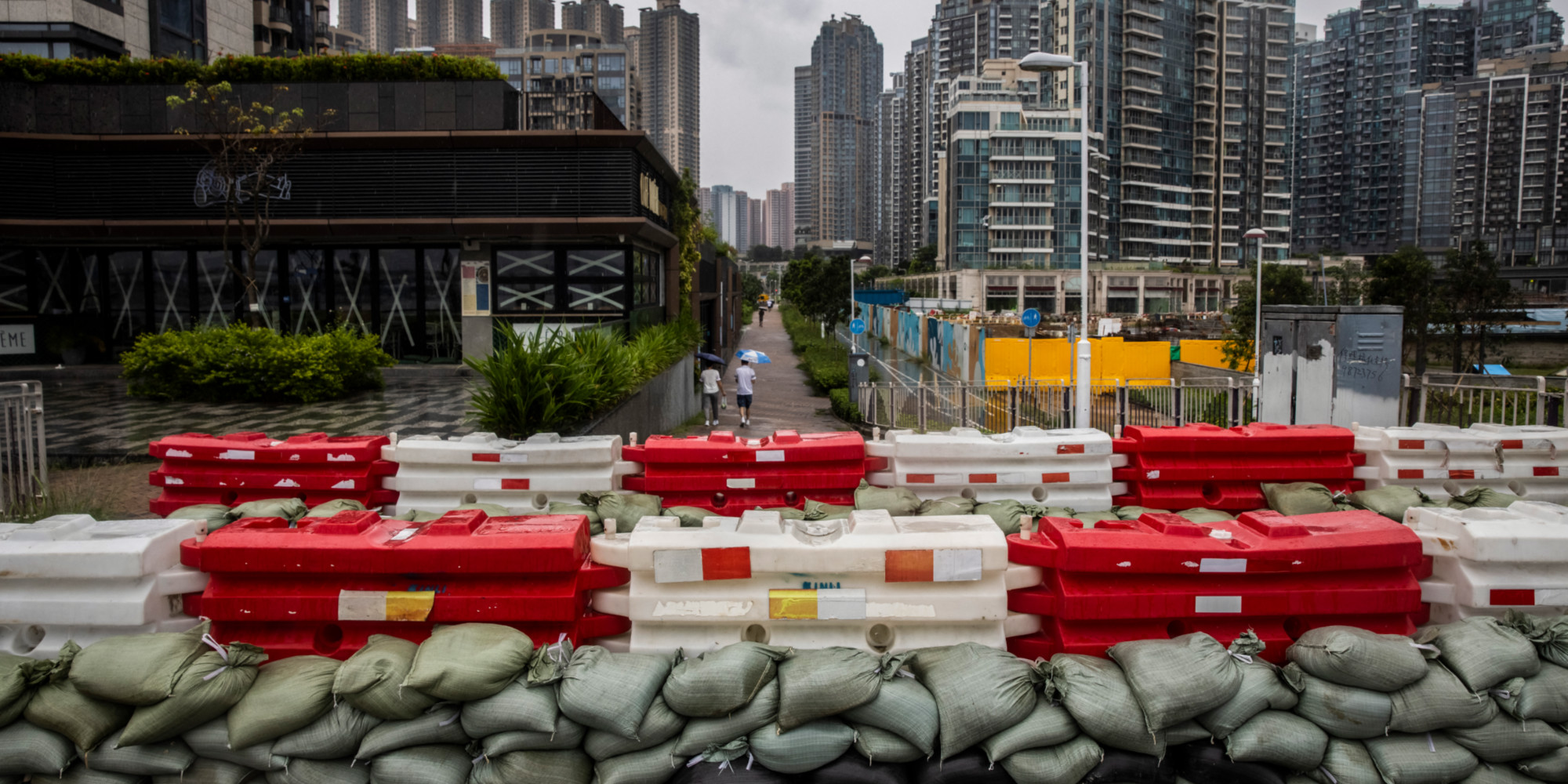Super Typhoon Saola threatens to hit southern China on Friday with some of the strongest winds the region has ever seen, forcing people in the megacities of Hong Kong and Shenzhen to hunker down. With the possibility of a direct impact on Hong Kong, authorities have warned they will consider issuing a higher alert “between 6 and 10 p.m. tonight” on Friday (between 10 a.m. and 12 p.m. GMT), raising it to T9 or even T10, a maximum that has only been issued 16 times since World War II.
“Saola could become the strongest typhoon since 1949 to hit the Pearl River Delta,” which includes major cities like Hong Kong, Guangzhou, Shenzhen and Macao, the National Meteorological Center said on social media Weibo. As of 2 p.m. (0600 GMT), Saola was 140 kilometers east-southeast of Hong Kong, with sustained winds of 210 km.
Risk of “severe flooding”
The Exchange announced early Friday that “morning trading sessions for all markets would be cancelled.” The super typhoon could bypass the territory less than 50 kilometers to the south, and cause a storm surge around Victoria Harbour, according to the observatory.
“There could be severe flooding,” he said, adding that eastern coastal areas could see water levels similar to those caused by Typhoon Mangkhut in 2018. More than 300 people were injured in Hong Kong. In mainland China, it had affected more than three million people in the southern provinces, killing six.
The streets of Hong Kong were deserted on Friday, apart from a few locals looking for last-minute shopping for the weekend, like Ms Lee, accompanied by her baby daughter. According to her, the government made the right choice by delaying the start of the school year. “If it reaches (alert level T10), there could be traffic disruptions. It’s better to wait until this is over before sending the children to school,” Ms Lee said.
Storefronts and windows in shops and homes have been protected with duct tape, while office buildings near Victoria Harbor have barricaded entrances to try to keep water out.
300 canceled flights, offices, shops and markets closed
The Hong Kong airport authority announced the cancellation of more than 300 flights on Friday, but 600 more remain scheduled. In mainland China, Guangdong Province has declared a Level I wind emergency, the maximum level. The National Meteorological Bureau estimated that Saola could be among the five most powerful typhoons to hit the province where Shenzhen has been located since 1949. Shenzhen, a city of 17.7 million people, has decided to close offices, businesses and markets from 4:00 p.m. (08:00 GMT).
“Apart from emergency response personnel and livelihoods protection personnel, people are advised not to go outside,” the emergency management department said, adding that “the city will open all shelters so that the public can take refuge”.
All public transport in Shenzhen will cease service in the evening, while trains to and from Guangdong will be suspended from 8 p.m. Friday until 6 p.m. local Saturday. “My eldest son was supposed to go to Chengdu University today, but his flight was cancelled,” said Wu Wenlai, 43, who runs a restaurant in suburban Shenzhen. But he is not worried despite the warning from the authorities. “We are used to it. We usually have several typhoons a year.” Authorities in Macau, a neighboring territory of Hong Kong, said they were considering the possibility of issuing a T8 level alert on Saturday.
Climate change increases the intensity of tropical storms
On the other hand, surfers took advantage of winds which already reached 63 km / h to compete with huge waves already generated by the approach of the typhoon. Southern China is frequently hit by typhoons that form in the warm oceans east of the Philippines in summer and fall and then move west.
Although they can temporarily disrupt cities like Hong Kong and Macau, typhoons cause far fewer casualties and damage, thanks to stricter building standards and better flood management systems. Due to the passage of Saola earlier this week in the northern Philippines, thousands of people were displaced, but no casualties were reported. Climate change has increased the intensity of tropical storms, with more rain and stronger gusts causing flash flooding and coastal damage, experts say.
